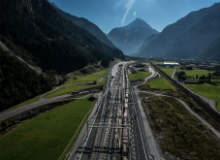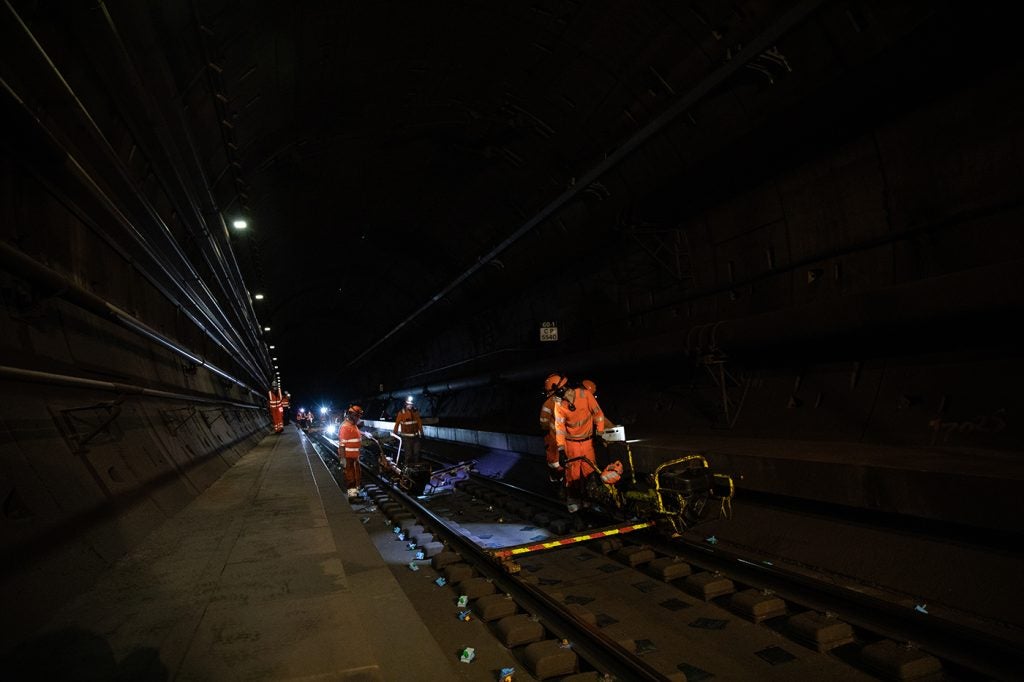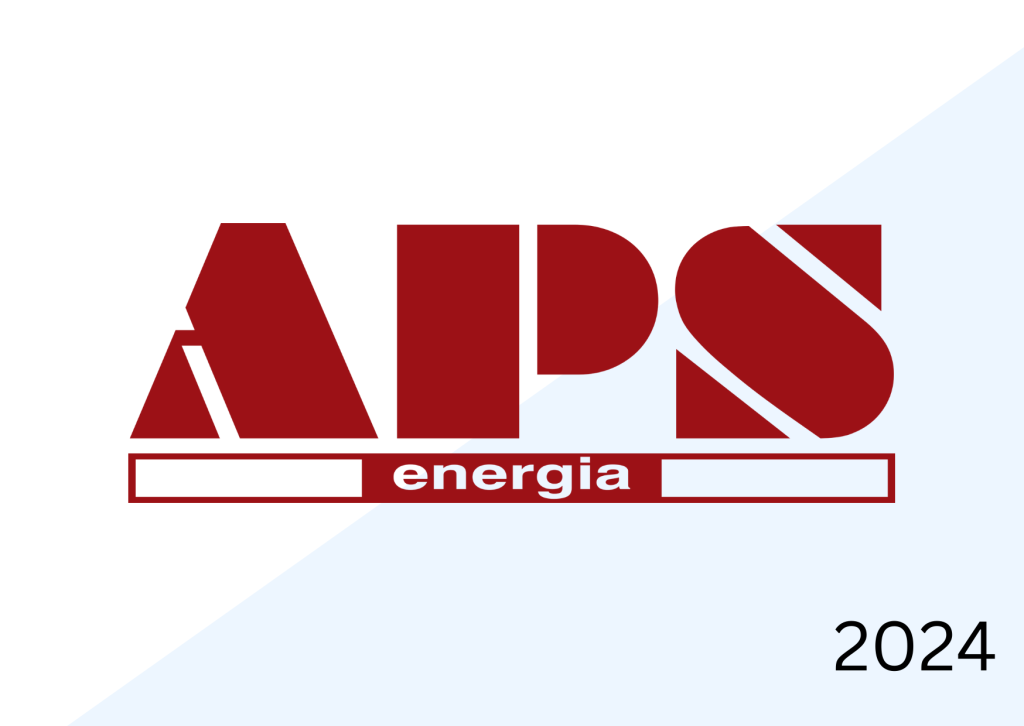
The creation of a fast and efficient high-speed railway slashing through the Alps was never going to be an easy feat. But in October, The Gotthard Base Tunnel passed its first track tests with flying colours, ahead of its official launch in December 2016.
Switzerland’s vision to tunnel through the Alpine region has been almost 70 years in the making. Aside from generating economic growth by enhanced freight and passenger transportation, the creation of the Gotthard axis will also mark one of Europe’s largest environmental protection projects, aimed at preserving the Alpine area.

The Gotthard axis is a 150km network of tunnels, galleries, cross passages and shafts stretching from Switzerland’s north portal at Erstfeld to the south portal at Bodio.
The original plan for it dates back to 1947, when engineer and traffic planner Carl Eduard Gruner of Basel drafted a combined road and rail sketch connecting Amsteg and Bodio.
The real works didn’t start until 1999, when the excavation mission began for Gotthard, and over the course of eleven years, a total of 28m metric tons of excavated rock have been transported out to reveal today’s 57km underground tunnel of tracks. Located 2,300m underground, the Gotthard Base Tunnel is also the world’s deepest railway tunnel constructed to date.
How well do you really know your competitors?
Access the most comprehensive Company Profiles on the market, powered by GlobalData. Save hours of research. Gain competitive edge.

Thank you!
Your download email will arrive shortly
Not ready to buy yet? Download a free sample
We are confident about the unique quality of our Company Profiles. However, we want you to make the most beneficial decision for your business, so we offer a free sample that you can download by submitting the below form
By GlobalData
Switzerland’s motivation for completing this challenging task is two-fold: both freight and passenger traffic are expected to benefit greatly from increased speeds, smaller distances and overall shorter journeys, making rail travel more competitive with road and air routes.
Passenger trains will reach speeds of 250km/h along 60km of mostly straight overground track, specifically designed with a minimum amount of curves and level crossings. This change is expected to increase the number of passenger trains on the route by 25%. Approximately 20 million people living in the area between southern Germany and northern Italy will benefit from Gotthard’s opening.
Regarding transport of goods, the project’s main contractor for the Swiss Government AlpTransit Gotthard Ltd (ATG) estimates that 220 to 260 trains per day can travel over the new route, carrying up to 2,000-tonne loads. This will increase freight capacity from 20 million tonnes to 50 million tonnes, according to ATG.

The first major milestone in Gotthard’s history was achieved on 15 October 2010, when the final breakthrough of the tunnel took place 30km from the south portal and 27km from the north portal. Around 80% of the main tube was carved out by tunnel boring machines, with the rest achieved by conventional drilling and blasting. All of this work was carried out with great accuracy, achieving a deviation of only 8cm horizontally and 1cm vertically.
Later that year, engineers began the installation of the railway infrastructure systems along the Bodio-Faido leg of the tube. By 2012, installation was completed along 16km of track and included everything from railway track to catenary, electric power supply, telecommunications and safety systems.

Aside from its underground tunnelling, the Gotthard project has also required extensive construction of overground infrastructure, including bridges and underpasses.
Along the Reuss valley, the track crosses a varied landscape replete with dwellings, roads, rivers and agricultural land. Mitigation was therefore an integral part of the project, minimising the risk of air and noise pollution, as well as the threat of floods and general disruption the line might pose to the surrounding natural habitat.

Electromechanical systems. The tunnel was divided into sections for construction purposes, with work taking place on various subdivisions simultaneously.
The background infrastructure consists of ventilation, water supply and drainage systems, as well as electrical and fire protection installations. The systems are generally deployed in the cross passages and the two multifunction stations of the Gotthard Base Tunnel, while others will go in the tubes and portal areas of the tunnel.

Once both the structural shell and infrastructure systems are in place, installing the railway system itself is the last major step in completing the NRLA Gotthard axis.
The railway system includes the track, catenary, electric power supply, cables, telecommunication and radio systems, safety and automation systems, and control systems. The single track tubes along the Gotthard tunnel are connected together every 325m by cross passages.
A total of 176 cross galleries dotted along the tunnel serve various functions, including two emergency stations at Faido and Sedrun at which trains can stop in case of an incident. Every tunnel crossover has a separate air-conditioned technical room filled with building control systems, cables for the railway systems and a water pipeline for the multifunction station.

The work contract for the Gotthard Base Tunnel railway systems is worth over $1.7bn and the task has been divided amongst various companies.
While Railway Systems General Contractor has been tasked with installing the railway systems, Alpiq, Alcatel-Lucent/Thales, Heitkamp and Balfour Beatty Rail are responsible for the planning, installation and commissioning of the system.
ATG points out that its value makes it one of the “world’s largest contracts for railway systems, and the largest work contract of ATG Gotthard Ltd.”

In October 2015, ATG announced that the testing phase of the Gotthard Base Tunnel had been in full swing since the beginning of the month, mentioning that “the first test runs have already been successfully performed”.
The testing included the first runs on the new European Train Control System Level 2, followed by trials of the line’s GSM-R digital wireless communication system and the tunnel radio system. The interplay between track, rolling stock and overhead conductor was also included.
According to an ATG press release, during November and December, a special Type ICE-S train was rented from Germany to be tested at speeds of up 275km/h. Testing will resume again with other rolling stock in February 2016.

Around 5,000 more trial runs are planned until the end of May 2016, involving 160 people, from test train drivers through test-run supervisors and traffic managers to heads of safety.
ATG CEO Renzo Simoni pointed out that during the eight-month testing phase, the company has a responsibility to thoroughly test all tunnel components. “We must prove the functionality and fulfilment of the safety requirements in the Gotthard Base Tunnel,” he said.
“Only when this has been done can we hand over to the Swiss Government and Swiss Federal Railways, at the opening festivities on 1 June 2016, a tunnel that is ready for operation.”
The first scheduled trains are expected to start operating inside Gotthard Base Tunnel from December 2016.





